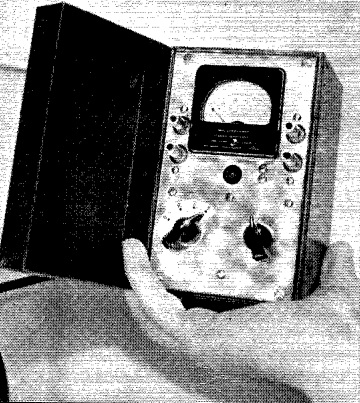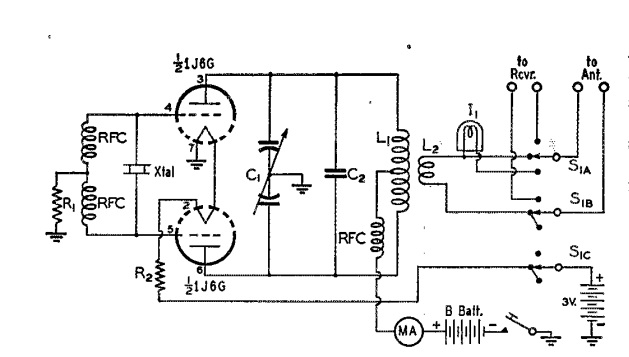 In recent years, the ARRL has billed Amateur Radio as being the thing that will get through “when all else fails,” but this is not a new concept. Seventy-five years ago this month, the August 1947 issue of QST described how to build a little transmitter called “The Last Ditcher.”
In recent years, the ARRL has billed Amateur Radio as being the thing that will get through “when all else fails,” but this is not a new concept. Seventy-five years ago this month, the August 1947 issue of QST described how to build a little transmitter called “The Last Ditcher.”
According to the author, QST Technical Assistant John Paddon, VE3BLZ, most emergency situations saw the bulk of amateur traffic carried by stations running car batteries, storage batteries, or gasoline generators.
“But suppose an emergency appeared under conditions such that it was utterly impossible to reach the scene except on foot and that all gear had to be back-packed. An example might be a plane crash on a mountain in broken country or a spot in a flood that could only be reached by wading.” In other words, a rig was needed when all else failed.
The solution was the one-tube transmitter shown here, using a 1J6G tube, mounted in a steel card index file box. Two flashlight batteries powered the filament, and the B battery could be anywhere between 22.5 and 180 volts. The author reported making a number of successful QSOs running 135 volts at 17 mA, which works out to an input power of just over 2 watts. The set could cover either 80 or 40 meters.
According to the author, “with the ‘Last-Ditcher’ on the shelf you are ready to go should any emergency arise. Let it be hoped there never will be a call for it. When there is no emergency a surprising amount of fun can be had–if you have a yen to operate from a mountain top or a bush camp it is a lot easier to shove this little box in with the lunch. You won’t have to run leads into your car, unload storage batteries or drag out the gas putt-putt.”
The article didn’t mention which receiver you would take with you on foot, but as our readers know, there were many available options. One good choice would be the “one tube flashlight” set we previously described.

